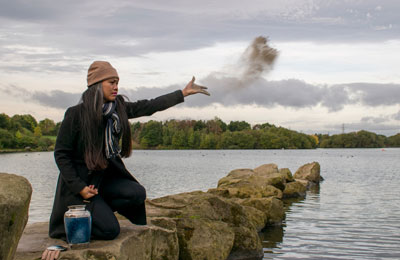Cremation FAQs

Deciding on cremation can be difficult and leave you with many questions. Even if you have already made the decision, you may have uncertainty about the details.
To help, we have compiled some of the most common questions our community has asked about cremation in our Cremation FAQs. Our cremation pages also contain a great deal of information that can help you decide if cremation is right for you and your family.
Whether you choose cremation or in-ground burial, your best protection is to research before you enter into any legal agreement. Once you start to work with a company, ask questions about the qualifications of their staff, their procedures, and their processes. Listen to your gut. If you feel pressure to buy certain items, or you feel uncomfortable with the staff, look for another provider. Remember, the FTC’s Funeral Rule requires funeral providers to provide prices upfront and over the telephone. They must also present you with a full range of options, not just the most expensive ones.
Absolutely! With cremation, you actually have more options than with an in-ground burial. You can still have a funeral with the body on display, or you can have a memorial service with or without the remains present. Keep in mind that if you have a viewing, embalming may be required. Memorial services for cremation are flexible and can be held either at a funeral home, a venue such as a house of worship, a restaurant, or some other location that has meaning for the deceased.
Unless you plan to have a full funeral with the body present, you are not required to purchase embalming. You may not even need to embalm with a viewing. Regulations vary state by state, so it is best to confirm what your state requires before you commit to purchasing this service.
Yes! When you are making arrangements for the cremation, you will be asked to sign an authorization form. This form should have a place for you to record how you would like the remains returned to you. The funeral director or crematorium should be able to provide you with an estimate of how long it will take until you have access to the remains.
Proper identification of the deceased is one of the most important elements of the cremation process. Many facilities post their identification procedures on their websites and provide you with written information outlining their policies. If you are working with a funeral director, he or she will review the information with you. Do not hesitate to ask questions about the process and make sure you are comfortable with the steps of the process before you authorize the cremation.
There are so many things you can do with the ashes of your loved ones! These days, the only limit is your imagination! Ashes can be buried or placed in a columbarium or kept at home. In addition to traditional urns, there are products available that use ashes for jewelry, artwork, fireworks, and much more. There are many examples in our Memorial Store.
One of the most popular options is scattering the ashes at a place that was significant to the deceased. To learn more about scattering, visit our “Scattering Ashes” page. If you plan to transport the ashes, make sure that you comply with pertinent regulations. We have more information regarding transporting ashes on our “Transporting Ashes” page.
No! It is illegal to perform multiple cremations at the same time.
Many cremation facilities offer the loved ones of the deceased the opportunity to witness the cremation. Policies vary from facility to facility so you should ask your provider what accommodations are available for viewing or taking part in the actual process of cremation.
You will likely need a casket for a funeral or viewing with the body present. That doesn’t mean you have to buy one, though. Many facilities offer caskets for rental. You will also need an appropriate container to hold the body during the cremation. There are many economical options. You will likely see the term “alternative container.” This refers to a combustible, environmentally safe container to hold the body for the cremation. Read more about your options on our Cremation Caskets page.
If you have a funeral with the body present, the deceased will be prepared in much the same way it is for in-ground burial. It will be cleaned and perhaps embalmed. If you have a cremation without a viewing, the body will be cleaned and medical devices removed. For example, pacemakers must be removed since they can explode during cremation so they are removed. Silicone implants and other prosthetics are also removed.
The positions of various denominations and sects vary widely. Many religions leave it up to the individual to decide. Some still forbid cremation while others mandate it. If you are trying to decide if cremation is right for you and have questions about your religion’s stance, we recommend that you consult with your pastor, priest, or spiritual advisor. Read more on our Religion and Cremation Page.
No! You are not required to buy an urn from the funeral home or crematory you use. In fact, you do not have to buy an urn at all. These days, some people make their own containers for the ashes, or they purchase one of the many beautiful choices available online. To learn more about purchasing an urn, visit our “How to Buy an Urn” page.
The options for green cremation are growing. However, most people are still limited primarily to traditional cremation. There are a number of ways that you can help ensure that your cremation does as little harm to the environment as possible. Choosing a biodegradable cremation container and urn is a very good way. We offer other suggestions for reducing the footprint of cremation on our page on Green Cremation.
We hope that our Cremation FAQ has helped answer some of your most important cremation questions. If you have cremation questions regarding a particular provider you are considering, you shouldn’t hesitate to ask. You should never be made to feel uncomfortable about wanting to know more about the process.

